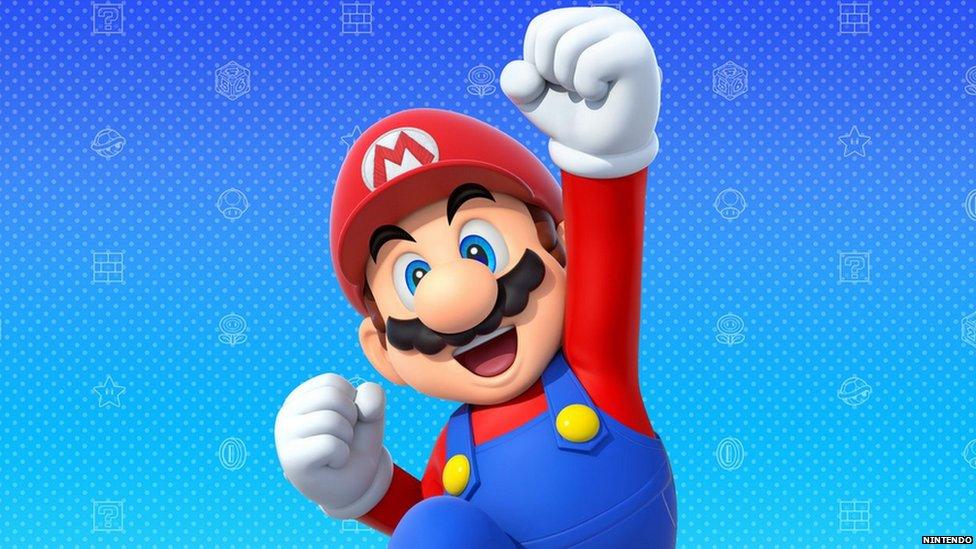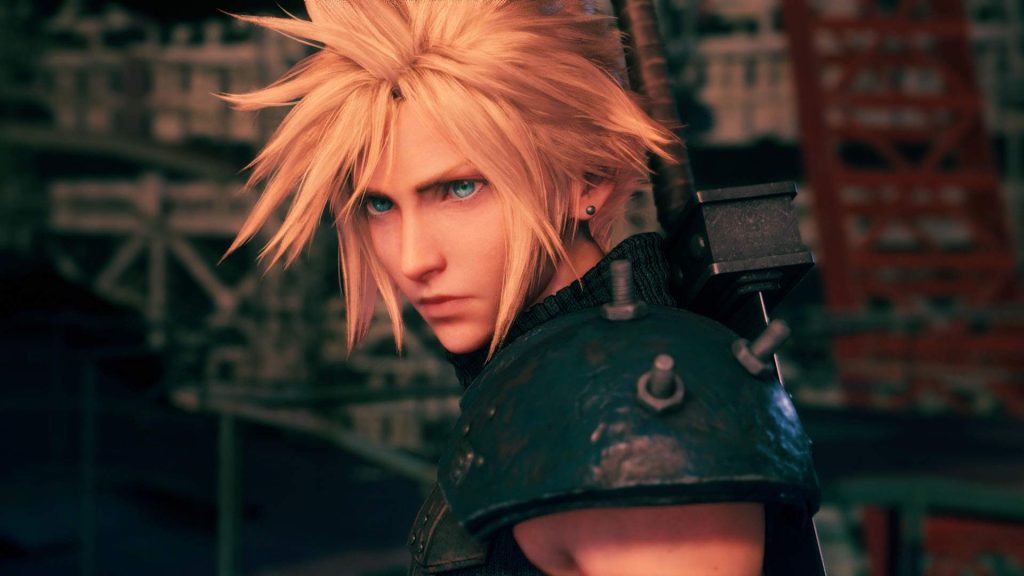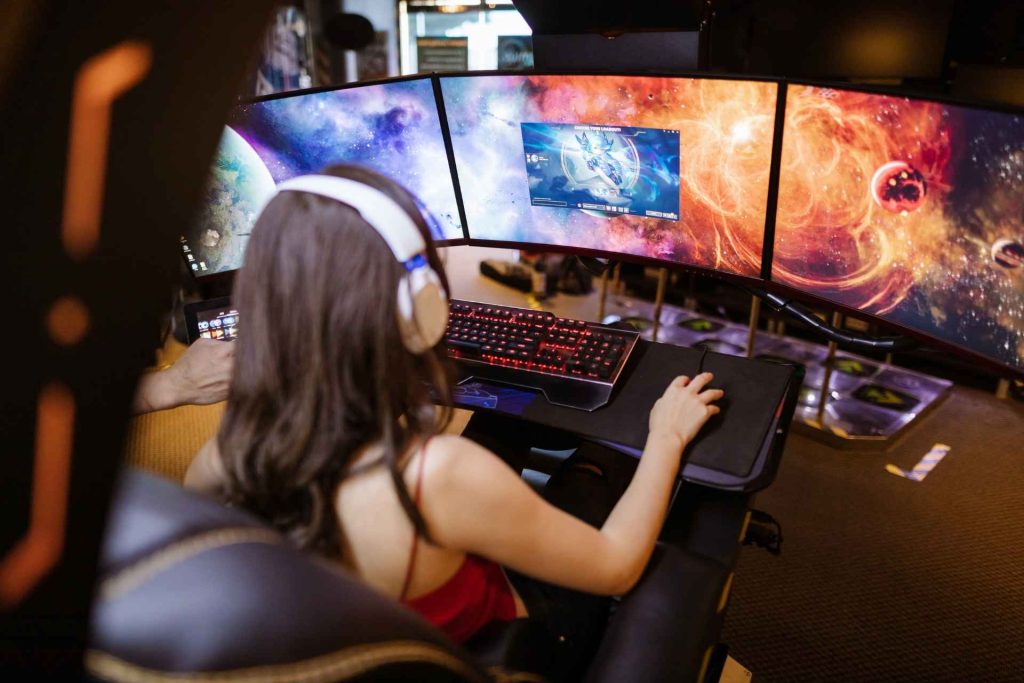Gamer Bounty
Bounties, Battles, Bragging Rights.Top 10 Most Iconic Video Game Characters of All Time
Monday , 1, September 2025 Listicle Comments Off on Top 10 Most Iconic Video Game Characters of All TimeVideo games have given us some of the most memorable characters in entertainment history. These icons are more than just digital figures; they’ve shaped gaming culture, influenced storytelling, and left lasting impressions on millions of players. Here’s a look at ten of the most legendary video game characters of all time.
1. Mario (Super Mario Series)
When you think of video games, Mario is often the first name that comes to mind. Since his debut in Donkey Kong (1981) and later starring in Super Mario Bros. (1985), Mario has become the face of Nintendo and a global symbol of gaming. His cheerful personality, red cap, and mustache are instantly recognizable, making him the ultimate gaming mascot.

2. Link (The Legend of Zelda Series)
The silent hero from The Legend of Zelda franchise has been saving the kingdom of Hyrule since 1986. Known for his green tunic, courage, and mastery of the Master Sword, Link represents adventure and heroism in gaming. His timeless quest to rescue Princess Zelda and defeat evil continues to captivate players across generations.
3. Sonic the Hedgehog (Sonic Series)
Sega’s answer to Mario, Sonic burst onto the scene in 1991 with his blazing speed and cool attitude. With his blue spikes and signature red shoes, Sonic became a cultural icon of the 90s. His rivalry with Dr. Robotnik (Eggman) and his quest to collect golden rings have made him a beloved character for decades.
4. Lara Croft (Tomb Raider Series)
Lara Croft redefined the role of female characters in gaming. Debuting in 1996, the fearless archaeologist and adventurer became one of the first major female protagonists to lead a successful franchise. With intelligence, agility, and strength, Lara remains a symbol of empowerment and innovation in game design.
5. Master Chief (Halo Series)
The face of the Halo franchise and Xbox brand, Master Chief is a cybernetically enhanced supersoldier who has been battling alien threats since 2001. His iconic green armor and mysterious personality have made him a legendary figure in first-person shooters, influencing countless sci-fi games that followed.
6. Pikachu (Pokémon Series)
As the official mascot of the Pokémon franchise, Pikachu is one of the most recognizable characters in gaming history. Cute, electric, and full of charm, Pikachu helped Pokémon become a global phenomenon starting in 1996. From games to TV shows and movies, Pikachu has become a cultural icon loved by fans of all ages.

7. Kratos (God of War Series)
Kratos, the Ghost of Sparta, is one of the most powerful and complex characters in modern gaming. Introduced in 2005, Kratos’ journey of vengeance and redemption against gods and monsters is legendary. His brutal combat style, distinctive tattoos, and powerful weapons make him a true icon of action gaming.
8. Samus Aran (Metroid Series)
Samus Aran broke new ground when she appeared in Metroid (1986) as one of the first female protagonists in gaming. Known for her advanced Power Suit and fearless attitude, Samus has been battling space pirates and alien creatures for decades. Her reveal as a woman was a groundbreaking moment in gaming history.
9. Cloud Strife (Final Fantasy VII)
Cloud Strife is one of the most iconic characters in RPG history. His spiky hair, oversized Buster Sword, and emotional storyline made him an unforgettable figure in Final Fantasy VII (1997). Cloud’s character helped define the JRPG genre and continues to resonate with fans through remakes and spin-offs.

10. Pac-Man (Pac-Man Series)
Simple yet timeless, Pac-Man is a true pioneer of video game history. Debuting in arcades in 1980, Pac-Man’s maze-chasing gameplay and charming design captured the hearts of millions. More than 40 years later, Pac-Man remains a symbol of retro gaming and one of the most enduring icons of all time.…
Top Gaming Trends to Watch in 2025 – From AI NPCs to Cloud Play
Monday , 4, August 2025 Trends Comments Off on Top Gaming Trends to Watch in 2025 – From AI NPCs to Cloud PlayThe gaming industry continues to evolve at a rapid pace, with 2025 shaping up to be a landmark year for both developers and players. From revolutionary AI-driven experiences to the rise of cloud-based ecosystems, this year is set to reshape how games are designed, accessed, and enjoyed. Whether you’re a casual gamer or a hardcore enthusiast, understanding the biggest trends can help you stay ahead of the curve and make smarter choices about the platforms and genres you engage with.

AI NPCs That Learn and Adapt
Artificial intelligence has long powered non-player characters, but 2025 is pushing that concept into groundbreaking territory. Modern NPCs are no longer just scripted figures following pre-written dialogue. Thanks to advanced machine learning, characters in select titles now analyze player behavior in real time and evolve based on decisions made during gameplay. This means that enemy strategies can adjust, companions might build trust over time, and even minor characters could remember past interactions. The result is a more dynamic, immersive experience where no two playthroughs feel the same.
Cloud Gaming’s New Frontier
Cloud gaming isn’t new, but 2025 has cemented it as a dominant force. With major platforms offering low-latency experiences across multiple devices, players no longer need expensive hardware to access high-end games. Services like NVIDIA GeForce NOW, Xbox Cloud Gaming, and others continue to reduce download times, offer seamless updates, and improve mobile performance. Developers are now building games specifically for cloud delivery, optimizing titles to take advantage of server-side processing and cross-platform accessibility.
Cozy Games Take Center Stage
The demand for high-octane competition isn’t going away, but 2025 is seeing a surge in the popularity of cozy games. These titles focus on low-stress environments, gentle pacing, and emotional storytelling. Games centered around farming, decorating, crafting, and relationship-building are gaining attention not just for their relaxing qualities but also for their deep narratives and inclusive mechanics. This genre has become especially appealing to players looking for meaningful digital escapes from fast-paced lifestyles.
Expanded Use of Haptic Feedback and Immersive Controls
Hardware innovation continues to transform how games are experienced physically. New haptic systems in controllers and peripherals allow for more nuanced sensations, letting players feel the difference between walking on grass, stone, or sand. Immersive controllers are also being introduced across VR and non-VR platforms, allowing gestures and physical movement to play a larger role in interaction. These improvements deepen player engagement and create a more tactile connection to in-game environments.
Cross-Platform Multiplayer Becomes the Norm
Gone are the days when players were restricted by console or PC boundaries. In 2025, cross-platform play is not just a feature—it’s an expectation. Developers are launching titles with synchronized multiplayer support across mobile, console, and PC ecosystems. This approach not only builds stronger communities but also ensures that content updates and patches are rolled out universally. As a result, friends can now game together regardless of the devices they own.
Integration of Generative Tools in Game Creation
Generative AI has also entered the development pipeline, offering new tools for creating environments, dialogue, and even music. These systems help small studios produce larger-scale experiences without the same resource limitations. While some debate the creative risks of AI-generated assets, many studios are using them as creative companions rather than replacements, accelerating workflows and expanding artistic direction.
Eco-Conscious Gaming Initiatives
Sustainability has made its way into the gaming world, with developers and hardware makers prioritizing eco-friendly practices. From energy-efficient servers used in cloud gaming to packaging made with recycled materials, 2025 is seeing the industry take steps toward greener practices. Players are also beginning to factor environmental impact into their purchasing decisions, encouraging more companies to invest in responsible production.…
The Top 5 Gaming Bounties in 2025 You Should Join
Monday , 28, July 2025 Gaming Comments Off on The Top 5 Gaming Bounties in 2025 You Should JoinGaming bounties have exploded in popularity, giving players the chance to earn real rewards for completing challenges, finding bugs, or climbing leaderboards. Whether you’re a competitive gamer or just love exploring new titles, 2025 is packed with exciting bounty opportunities that are worth checking out.
Here’s a look at five of the best gaming bounties this year — offering everything from cash prizes to exclusive in-game loot.
1. Fortnite Creative Build Bounty
Epic Games has doubled down on user-generated content in 2025, and one of their hottest initiatives is the Creative Build Bounty. Players and creators are invited to design custom maps and game modes using the Fortnite Creative toolset. The top entries receive cash rewards, V-Bucks, and even potential placement in the official Discover tab.
This bounty is ideal for creative minds who enjoy world-building, logic puzzles, or mini-games. Entries are judged on originality, playability, and visual style — and you don’t need to be a coding expert to get started.
Prize Highlights:
-
Up to $10,000 for top creators
-
Exposure to millions of players
-
Limited-edition cosmetics for finalists
2. Call of Duty: Warzone Anti-Cheat Hunt
Activision has introduced a unique bounty system aimed at improving the Warzone experience: The Anti-Cheat Hunt. Players who report confirmed cheaters or submit footage of exploiters can earn in-game rewards or even real-world perks.
This community-focused bounty not only helps clean up matches but also incentivizes honest players to be proactive.
Why it matters:
-
Rewards include COD Points, exclusive calling cards, and beta access to upcoming updates
-
Top contributors may be invited to join Activision’s testing programs
3. The Sandbox Game Jam Series
Web3 gaming continues to grow, and The Sandbox remains at the forefront. Their monthly Game Jam bounty events invite players and developers to design immersive game experiences using their voxel-based tools.
Themes change monthly, and rewards are paid out in $SAND (their in-game currency), which can be traded for other crypto or used within the Sandbox ecosystem.
Why join:
-
No coding experience required
-
Prizes worth thousands of dollars
-
Great way to break into blockchain gaming
4. League of Legends: Bug Hunter Program
Riot Games has always been focused on polish, and in 2025, their Bug Hunter Program is open to all active players. Whether you spot a weird animation glitch or uncover a gameplay bug, submitting it through their official system could earn you serious rewards.
The earlier and more critical your discovery, the better your bounty. This is perfect for detail-oriented players who know the game inside out.
Rewards may include:
-
Exclusive skins
-
Free RP (Riot Points)
-
Invitations to PBE (Public Beta Environment)
5. Destiny 2 Seasonal Challenge Bounties
Bungie has transformed seasonal content in Destiny 2 by adding Bounty Tiers to its seasonal activities. These include high-difficulty PvE challenges, time-based raids, and lore-specific puzzles that players can complete for unique loot.
Each bounty is tied to a theme and storyline, and top-tier completions earn a place on global leaderboards.
Notable perks:
-
Exotic weapons and armor
-
Custom emblems and shaders
-
Priority access to new content previews
Final Thoughts
Gaming bounties are no longer just niche events for hardcore players. In 2025, they’re accessible, rewarding, and built into many of the world’s most popular titles. Whether you’re reporting bugs, designing your own levels, or dominating competitive matches, there’s a bounty out there waiting for you.
So gear up, choose your challenge, and make your gameplay count — because in today’s gaming world, playing smart can literally pay off.
Why Competitive Gaming Isn’t Just for the Pros Anymore
Tuesday , 15, July 2025 Gaming Comments Off on Why Competitive Gaming Isn’t Just for the Pros Anymore
Once reserved for elite players and global tournaments, competitive gaming has evolved into a far more inclusive experience. Today, anyone with a console, PC, or even a smartphone can participate in a match, climb a leaderboard, or earn rewards — without being a full-time esports athlete. The rise of accessible platforms, local tournaments, and online challenges has opened the door to a new generation of casual competitors.
The Rise of Accessible Platforms
The gaming world has seen a surge in platforms that allow players to compete, not just play. From online ladders to reward-based tournaments, these systems provide structured gameplay without needing to qualify for major leagues. Services like GamerBounty.org are bridging this gap — offering a place where skill-based competition meets everyday gaming.
Gamers now have the chance to challenge others in familiar titles like Fortnite, Apex Legends, Rocket League, or Valorant and earn recognition without massive sponsorships or national team invites. The barrier to entry is lower than ever before.
Community Challenges Are Driving Engagement
Competitive gaming no longer requires a studio, sponsors, or high-end gear. Many communities organize weekend tournaments, bounty-style challenges, or seasonal events where participation matters more than placement. These casual setups not only offer rewards but also build lasting engagement and social interaction.
Whether it’s a Discord-based tournament or a prize match hosted by your favorite streamer, players can jump into the action without long-term commitments. This new wave of gaming culture supports fun, flexible play while still scratching that competitive itch.
Social Media and Streaming Changed the Game
Live streaming platforms like Twitch and YouTube have made competitive gaming more visible — and more personal. Viewers watch average players take on challenges, win prize matches, or build a following through gameplay, humor, or strategy. It’s not just about skill anymore; it’s about experience and connection.
This has inspired many casual gamers to join competitive scenes not to become the next esports star, but to engage, stream, and be a part of something bigger. Even mid-tier players can attract fans, sponsors, and opportunities — proof that dedication and personality go a long way.
Small Wins, Real Rewards
One of the biggest shifts in recent years is the emergence of reward-based gaming platforms. Instead of chasing international glory, players can now compete for gift cards, digital currency, or even real-world prizes through simple match wins or challenge completions.
These incentives create a sense of accomplishment that feels more personal and attainable than a trophy on a big stage. Platforms offering low-stakes, high-fun competition allow players of all levels to test themselves and win something tangible — no matter their rank.
The Future Is Inclusive
As game developers, communities, and platforms continue to support flexible competition, the divide between casual and professional gaming will keep narrowing. Features like ranked matchmaking, seasonal rewards, and platform-specific tournaments show that the industry recognizes every player — not just the pros.
Whether you’re playing for practice, glory, or just the thrill of the match, competitive gaming is now a space where anyone can belong. It’s no longer about being the best in the world — it’s about challenging yourself and having fun while doing it.